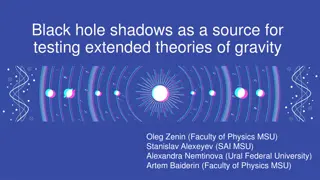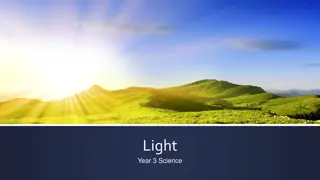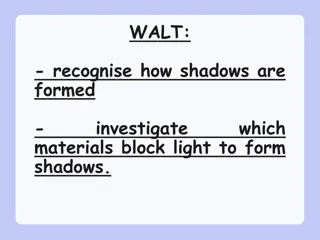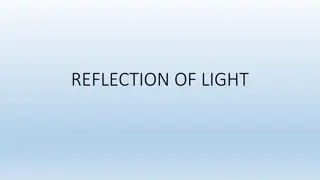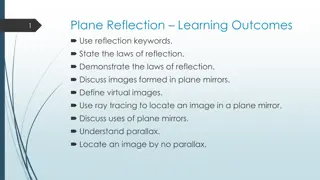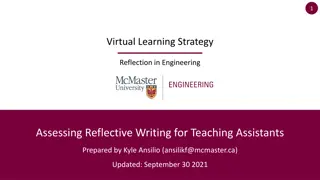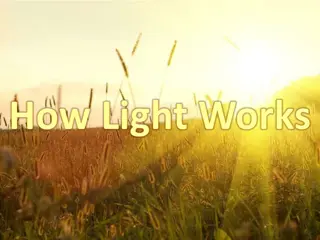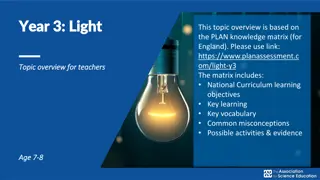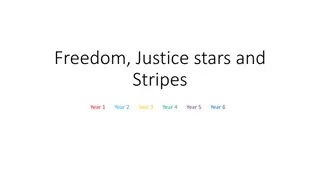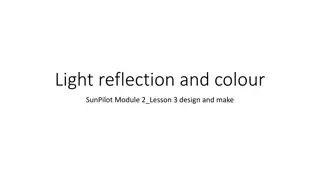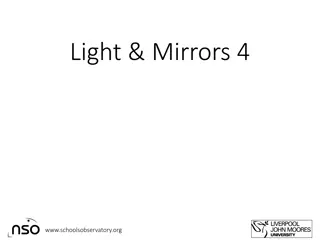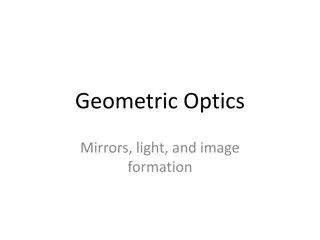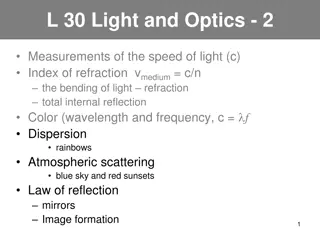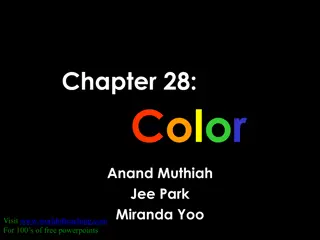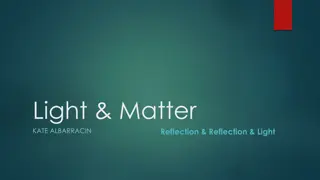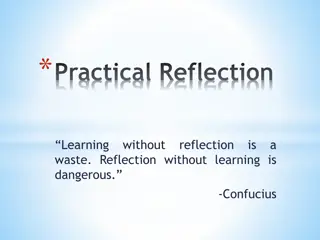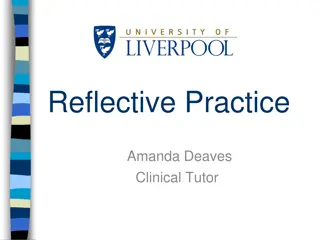Understanding Light, Shadows, and Reflection in Science
Light is a vital form of energy that helps us see objects. Luminous objects emit light, while non-luminous objects do not. Understanding how light interacts with objects, creating shadows and reflections, is crucial in science. Transparent objects allow light to pass through, translucent objects allow light partially, and opaque objects block light completely. Shadows form when opaque objects obstruct light, revealing information about object shapes. Rectilinear propagation of light explains how light travels in a straight line. Remember never to look directly at the Sun due to its harmful UV light.
Download Presentation

Please find below an Image/Link to download the presentation.
The content on the website is provided AS IS for your information and personal use only. It may not be sold, licensed, or shared on other websites without obtaining consent from the author. Download presentation by click this link. If you encounter any issues during the download, it is possible that the publisher has removed the file from their server.
E N D
Presentation Transcript
SAINIK SCHOOL GOPALGANJ CLASS VI SCIENCE LIGHT ,SHADOWS AND REFLECTION Dr A K CHOUBEY
LIGHT ,SHADOWS AND REFLECTION Light: Light is a form of energy. Light help us to see other objects Luminous Objects: Objects which emit their own light are called luminous objects EX: Sun, Star, Torch bulb Non-Luminous Objects: Objects which do not emit their own light are called Non- Luminous Objects. EX: Table , Chair
LIGHT ,SHADOWS AND REFLECTION How do we see Other objects: Light from the sun or other source fall on other objects and then travels Towards our eyes. (Reflected) Transparent objects: Objects which allow light to pass through them are called transparent objects Objects though which we can see clearly is called transparent objects. E.g.: Glass. Air, Water
Translucent objects: Objects which allow light to pass through them partially are called Translucent Objects. Eg: oiled paper, ice, Tracing paper, Butter paper, cloud, some kind of polythene Opaque Objects: Objects which do not allow light to pass through them are called Opaque objects Eg: Wood, Cardboard, Metal sheet
Shadow: Shadow is formed when an opaque object blocks the path of light. Properties of shadows: 1. For the formation of shadow, a source of light, an opaque object and a screen are needed 2. Shadows are dark in color. 3. Shadows are formed opposite to the source of light 4. Shadow is always obtained on a screen / on a wall 5. Shadows can give information about the shape of the object.( but not always) 6. Size of the shadows can be increased or decreased if the distance between the source and object or object and the screen are changed.
Rectilinear Propagation of light: LIGHT travels in straight line. This is called Rectilinear Propagation. PIN HOLE CAMERA: is a toy device to study that light travels in straight line Properties of image formed by a Pin Hole Camera: 1. Image formed by a pin hole camera is coloured 2. Image formed by a pin hole camera is inverted ( upside down) 3. Image formed by a pin hole camera is smaller in size.
Never look directly at the Sun: Reason: Sunlight has UV light ( ultra violet) rays which are harmful. Even UV light can cause blindness Mirror: A mirror is a polished surface which can make the image of an object. Types of Mirror: Plane mirror image formed is of the same size Concave mirror: reflecting surface is bent in Convex Mirror: reflecting surface is bulged- out.
Reflection: When light falls on a mirror, it is bounced back. Bouncing back of light is called reflection. Home Activity : 1) Study reflection pattern using a plane mirror, comb and a torch 2) Make a pin hole camera 3) Collect transparent, translucent and opaque objects with your friends.( Group Activity)
What is a Pinhole Camera? A camera without a lens which uses a very small hole pierced in one end to allow light to pass through. An upside down image is formed on the back of the camera which can be covered with photography paper or film. Light rays from an object passes through a small hole to form an image. The Plane Mirror -A mirror is a highly polished surface that forms images by uniformly reflected light.Note: images appear to be equi-distant behind mirror and are right-left reversed.
Light travels in straight lines Light travels in straight lines and this is the reason that the opaque object obstructs the light forming a shadow behind. We can see the light of a fixed candle from a long pipe when the pipe is straight, but when the pipe is bent we cannot see the light of the candle.
Mirror changes the direction of light falling on it 1.In a dark room, ask one of your friends to hold a mirror in his/her hand at one corner of the room. 2.Stand at another corner with a torch in your hand. 3.Cover the glass of torch with your fingers and switch it on. 4.Adjust your fingers with a small gap between them so that you can get a beam of light. 5.Direct the beam of the torch light onto the mirror that your friend is holding. 6.You can see a patch of light on the other side. Now adjust the direction of the torch so that the patch of light falls on another friend standing in the room.
How does light travel and get reflected? Fix a comb on one side of a large thermo Col sheet Fix a mirror on the other side. Spread a dark colored sheet of paper between the mirror and the comb. Keep this in sunlight or send a beam of light from a torch through the comb. This activity gives us an idea of the manner in which light travels and gets reflected from a
Class 6 Videos link https://www.youtube.com/watch?v=AbyHtfDG 8ME


